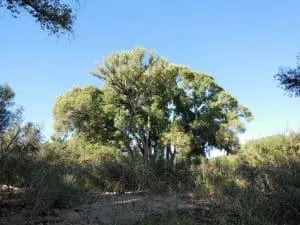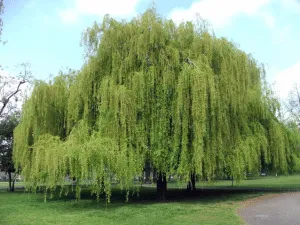Free Estimates
(805)532-1710
FREE ESTIMATE-24/7 SERVICE

Free Estimates
(805)532-1710

Privacy Policy



Privacy Policy

Privacy Policy
This privacy notice discloses the privacy practices for www.westcoasttreeco.com/. This privacy notice applies solely to information collected by this website. It will notify you of the following:
What personally identifiable information is collected from you through the website, how it is used and with whom it may be shared.
What choices are available to you regarding the use of your data.
The security procedures in place to protect the misuse of your information.
How you can correct any inaccuracies in the information.
Information Collection, Use, and Sharing
We are the sole owners of the information collected on this site. We only have access to/collect information that you voluntarily give us via email or other direct contact from you. We will not sell or rent this information to anyone.
We will use your information to respond to you, regarding the reason you contacted us. We will not share your information with any third party outside of our organization, other than as necessary to fulfill your request, e.g. to follow up on an appointment.
Unless you ask us not to, we may contact you via email in the future to tell you about specials, new products or services, or changes to this privacy policy.
Your Access to and Control Over Information
You may opt out of any future contacts from us at any time. You can do the following at any time by contacting us via the email address or phone number given on our website:
See what data we have about you, if any.
Change/correct any data we have about you.
Have us delete any data we have about you.
Express any concern you have about our use of your data.
Security
Wherever we collect sensitive information (such as credit card data), that information is encrypted and transmitted to us in a secure way. You can verify this by looking for a lock icon in the address bar and looking for “https” at the beginning of the address of the Web page.
While we use encryption to protect sensitive information transmitted online, we also protect your information offline. Only employees who need the information to perform a specific job (for example, billing or customer service) are granted access to personally identifiable information. The computers/servers in which we store personally identifiable information are kept in a secure environment.
If you feel that we are not abiding by this privacy policy, you should contact us immediately by contacting the telephone number or email address on this website.
Privacy Policy
This privacy notice discloses the privacy practices for www.westcoasttreeco.com/. This privacy notice applies solely to information collected by this website. It will notify you of the following:
What personally identifiable information is collected from you through the website, how it is used and with whom it may be shared.
What choices are available to you regarding the use of your data.
The security procedures in place to protect the misuse of your information.
How you can correct any inaccuracies in the information.
Information Collection, Use, and Sharing
We are the sole owners of the information collected on this site. We only have access to/collect information that you voluntarily give us via email or other direct contact from you. We will not sell or rent this information to anyone.
We will use your information to respond to you, regarding the reason you contacted us. We will not share your information with any third party outside of our organization, other than as necessary to fulfill your request, e.g. to follow up on an appointment.
Unless you ask us not to, we may contact you via email in the future to tell you about specials, new products or services, or changes to this privacy policy.
Your Access to and Control Over Information
You may opt out of any future contacts from us at any time. You can do the following at any time by contacting us via the email address or phone number given on our website:
See what data we have about you, if any.
Change/correct any data we have about you.
Have us delete any data we have about you.
Express any concern you have about our use of your data.
Security
Wherever we collect sensitive information (such as credit card data), that information is encrypted and transmitted to us in a secure way. You can verify this by looking for a lock icon in the address bar and looking for “https” at the beginning of the address of the Web page.
While we use encryption to protect sensitive information transmitted online, we also protect your information offline. Only employees who need the information to perform a specific job (for example, billing or customer service) are granted access to personally identifiable information. The computers/servers in which we store personally identifiable information are kept in a secure environment.
If you feel that we are not abiding by this privacy policy, you should contact us immediately by contacting the telephone number or email address on this website.
Our Services
Privacy Policy
This privacy notice discloses the privacy practices for www.westcoasttreeco.com/. This privacy notice applies solely to information collected by this website. It will notify you of the following:
What personally identifiable information is collected from you through the website, how it is used and with whom it may be shared.
What choices are available to you regarding the use of your data.
The security procedures in place to protect the misuse of your information.
How you can correct any inaccuracies in the information.
Information Collection, Use, and Sharing
We are the sole owners of the information collected on this site. We only have access to/collect information that you voluntarily give us via email or other direct contact from you. We will not sell or rent this information to anyone.
We will use your information to respond to you, regarding the reason you contacted us. We will not share your information with any third party outside of our organization, other than as necessary to fulfill your request, e.g. to follow up on an appointment.
Unless you ask us not to, we may contact you via email in the future to tell you about specials, new products or services, or changes to this privacy policy.
Your Access to and Control Over Information
You may opt out of any future contacts from us at any time. You can do the following at any time by contacting us via the email address or phone number given on our website:
See what data we have about you, if any.
Change/correct any data we have about you.
Have us delete any data we have about you.
Express any concern you have about our use of your data.
Security
Wherever we collect sensitive information (such as credit card data), that information is encrypted and transmitted to us in a secure way. You can verify this by looking for a lock icon in the address bar and looking for “https” at the beginning of the address of the Web page.
While we use encryption to protect sensitive information transmitted online, we also protect your information offline. Only employees who need the information to perform a specific job (for example, billing or customer service) are granted access to personally identifiable information. The computers/servers in which we store personally identifiable information are kept in a secure environment.
If you feel that we are not abiding by this privacy policy, you should contact us immediately by contacting the telephone number or email address on this website.
Privacy Policy
This privacy notice discloses the privacy practices for www.westcoasttreeco.com/. This privacy notice applies solely to information collected by this website. It will notify you of the following:
What personally identifiable information is collected from you through the website, how it is used and with whom it may be shared.
What choices are available to you regarding the use of your data.
The security procedures in place to protect the misuse of your information.
How you can correct any inaccuracies in the information.
Information Collection, Use, and Sharing
We are the sole owners of the information collected on this site. We only have access to/collect information that you voluntarily give us via email or other direct contact from you. We will not sell or rent this information to anyone.
We will use your information to respond to you, regarding the reason you contacted us. We will not share your information with any third party outside of our organization, other than as necessary to fulfill your request, e.g. to follow up on an appointment.
Unless you ask us not to, we may contact you via email in the future to tell you about specials, new products or services, or changes to this privacy policy.
Your Access to and Control Over Information
You may opt out of any future contacts from us at any time. You can do the following at any time by contacting us via the email address or phone number given on our website:
See what data we have about you, if any.
Change/correct any data we have about you.
Have us delete any data we have about you.
Express any concern you have about our use of your data.
Security
Wherever we collect sensitive information (such as credit card data), that information is encrypted and transmitted to us in a secure way. You can verify this by looking for a lock icon in the address bar and looking for “https” at the beginning of the address of the Web page.
While we use encryption to protect sensitive information transmitted online, we also protect your information offline. Only employees who need the information to perform a specific job (for example, billing or customer service) are granted access to personally identifiable information. The computers/servers in which we store personally identifiable information are kept in a secure environment.
If you feel that we are not abiding by this privacy policy, you should contact us immediately by contacting the telephone number or email address on this website.
Our Services

Contact
24/7 Hour Service
(805)532-1710
Send Email
License #1109716
Copyright © 2022 West Coast Tree Service. All Rights Reserved.
Copyright © 2022 West Coast Tree Service. All Rights Reserved.

Fremont Cottonwood (Populus Fremontii)
Trees of the cottonwood species are common in wet areas and along waterways in North America. The maximum height for this type of tree is 35 meters (114 feet), and its maximum circumference is 1.5 meters (4.9 feet). White, clumpy fruits are said to ripen on the Fremont Cottonwood’s smooth trunk. This tree has leaves that are both heart-shaped and marked with thin white lines.

Oregon Ash (Fraxinus Latifolia)
Similarly to the Fremont Cottonwood, the Oregon Ash prefers to be planted in wet areas close to running water and lakes. Oregon Ash trees, which can live up to 250 years, make up a sizable portion of California’s ancient flora. Likewise, their height ranges from sixty to eighty feet. Additionally, these trees are distinguished by their simple, compound leaves and short, stubby branches. The blossoms themselves are tiny and unassuming.

California Buckeye (Aesculus Californica)
California Buckeyes are 10–20 feet tall with a 30-foot canopy. Multiple trunks, silver bark, and low branches distinguish this tree. Natural roundedness makes them aesthetically pleasing. These trees have oval, dark-green leaves. The California Buckeye tree produces poisonous, animal- and human-harming seeds. Bees may be harmed by the nectar hummingbirds love.

California Pepper (Schinus Molle)
The California Pepper Tree is a robust evergreen that grows quickly. The pepper tree, which can reach heights of five stories with its deep, fibrous roots, is the tallest of all Schinus species and requires very little water. Its broad crown and drooping branches are reminiscent of the willow tree, another similar species.

Willow (Salix)
The Salicaceae family includes willow trees and shrubs. Willow trees, of which there are up to 400 different species, thrive in cool climates with moist soil. Their lifespan may be up to 70 years, but in practice, they rarely live that long. The leaves of a willow tree are long and smooth, in contrast to the smooth and grey bark.

California Fan Palm (Washington Filifera)
These are, as the name implies, related to palm trees. They can reach heights of 49 feet to 66 feet, and widths of 10 feet to 20 feet. The low maintenance requirements and the fact that they thrive in moist soil mean they can be grown in suburban backyards.

Tasmanian Blue Gum (Eucalyptus Globulus)
Eucalyptus is a Myrtaceae tree and shrub genus with over 700 species. Members of the genus dominate Australia’s tree flora, but they’ve been planted worldwide for 150 years and have been successful as exotics due to their fast growth, ability to adapt to degraded, acidic, and dry soils, prolific seed dispersal, and pest resistance.
We Guarantee Customer Satisfaction

Our top priority is to provide the best tree service in Thousand Oaks possible to each and every customer we serve. Thanks to our clients’ satisfaction, we have always been able to rely on referrals and repeat business. Our service goes beyond just being friendly – we also ensure that our staff is trained to the fullest, and are offered a wide range of opportunities that will help them improve their education and expertise.
We ensure that each of our technicians is an experienced worker who has undergone extensive training because we want to provide the best service possible to our clients. We protect our customers by offering on-the-job training as well as workshops and professional seminars. By maintaining a drug-free workforce, carrying worker’s compensation insurance, and utilizing cutting-edge technology, we are able to ensure both safety and productivity.
This all comes back to providing our customers with incredible service. When you give West Coast Tree Service of Thousand Oaks a call, you can rest assured that you have selected the best tree care experts in
Ventura County.

What Our Customers Say
"









